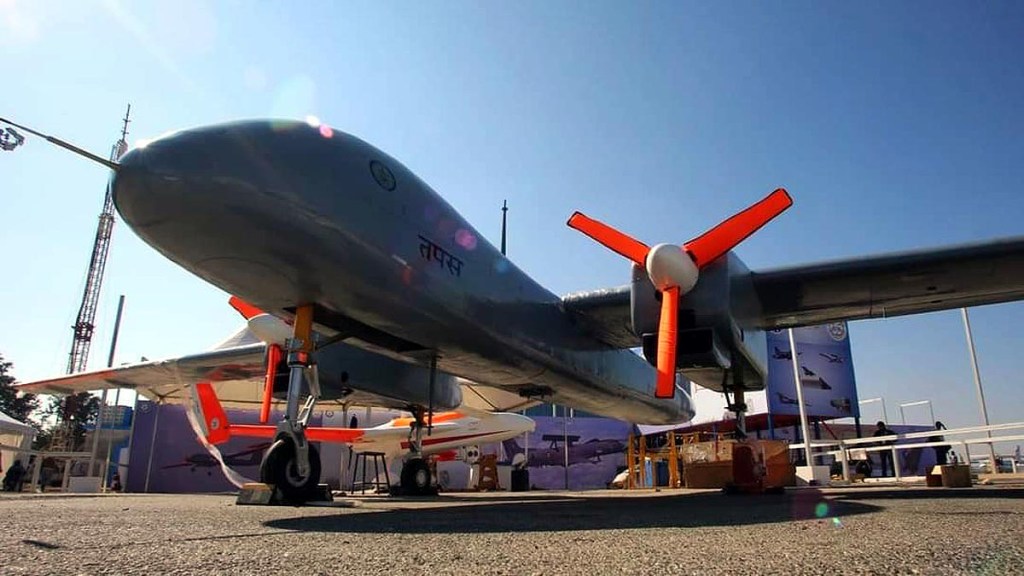India demonstrated significant achievement in Medium Altitude Long Endurance (MALE) drone category with the successful launch of Tapas-BH.
The Defence Research and Development Organization (DRDO) demonstrated the capabilities as Tapas Unmanned Aerial Vehicle (UAV) successfully completed its 200th flight.
The test shows important milestones in addressing the gaps in high-calibre-high-altitude military drones for intelligence, surveillance, and Reconnaissance (ISR) for the Indian armed forces.
Recently, India has also given the Acceptance of Necessity (AoN) for 31 MQ 9B Predator drones with estimated prices soaring beyond $ 3 billion for the Indian armed forces.
In a series of tests conducted on 27 June at the Aeronautical Test Range in Chitradurga in Karnataka, the indigenous UAV showcased its capabilities to the Indian armed forces for the first time.
According to the DRDO, Tapas is now ready for the crucial phase of user evaluation trials. The user evaluation trials will assess its functional and operational capabilities in real-world situations. The evaluation is based on the different altitudes and external parameters to withstand the rigour of military efficacy.
The development of Tapas-BH
Tapas-BH is the answer to India’s quest for ISTAR (Intelligence, Surveillance, Target Acquisition, Tracking, and Reconnaissance) requirements.
So far, for the user trials, DRDO with the Indian navy has already carried out the transfer of command-and-control capabilities of the TAPAS Unmanned Aerial Vehicle (UAV).
With DRDO, the ambitious project is developed by Bharat Electronics Limited (BEL), a leading Indian aerospace and defence company under the Ministry of Defence (MoD). The project was prioritized despite the delays as the government increased the cost to 1,786 crores in 2022 from 1,540.74 crores as per the revised estimates.
Importantly, at a later stage, DRDO will further open the scope of collaboration with Hindustan Aeronautics (HAL) alongside the BEL.
The TAPAS BH 201 unmanned aerial vehicle (UAV) is designed and developed in response to the tri-services Intelligence, Surveillance, Target Acquisition, Tracking, and Reconnaissance (ISTAR) needs.
The development takes the crucial element of long-endurance with an effective command range of 1000 km which is the basis of Tapas.
Technical specifications
TAPAS-BH is a Medium Altitude Long Endurance (MALE) UAV with an operating altitude of 30000 ft, and an endurance of 24 hours. By definition, TAPAS promises the integration of the highest-grade military EO Electro-Optical (EO) and Synthetic Aperture Radar (SAR) payloads. That will improve the images dramatically for the ISTAR range of operations for the military across the terrain.
So far, the MALE-category drone has successfully completed its maiden flight in November 2016 with an endurance of several hours at various altitudes.
TAPAS-BH also projects a range of 250 km which can carry a variety of payloads up to a maximum of 350 kg with a wing span of 20.6 metres.
However, it is based on the Rustom-2 platform which has been originally conceptualized and designed to perform Intelligence, Surveillance, and Reconnaissance missions for the Indian armed forces.
Additionally, RUSTOM drones will use Indian GPS GAGAN (GPS Aided Geo Augmented Navigation) developed by ISRO. The DRDO has defined its wide area coverage which can detect and be able to identify small targets.
So, the Tapas embraces greater technological improvement and range because of SATCOM (Satellite Communication) against regular line-of-sight communication. Additionally, it addresses the fundamental issues of automatic landing and take-off that were missing in the initial Rustom 2 prototype.
In fact, Rustom-II is comparable in the same class as Israel Aerospace Industries’ HERON.
The indigenous Tapas-BH while still at the final stage of its trials will be critical to the Indian armed forces in terms of saving significant costs and building capabilities.
